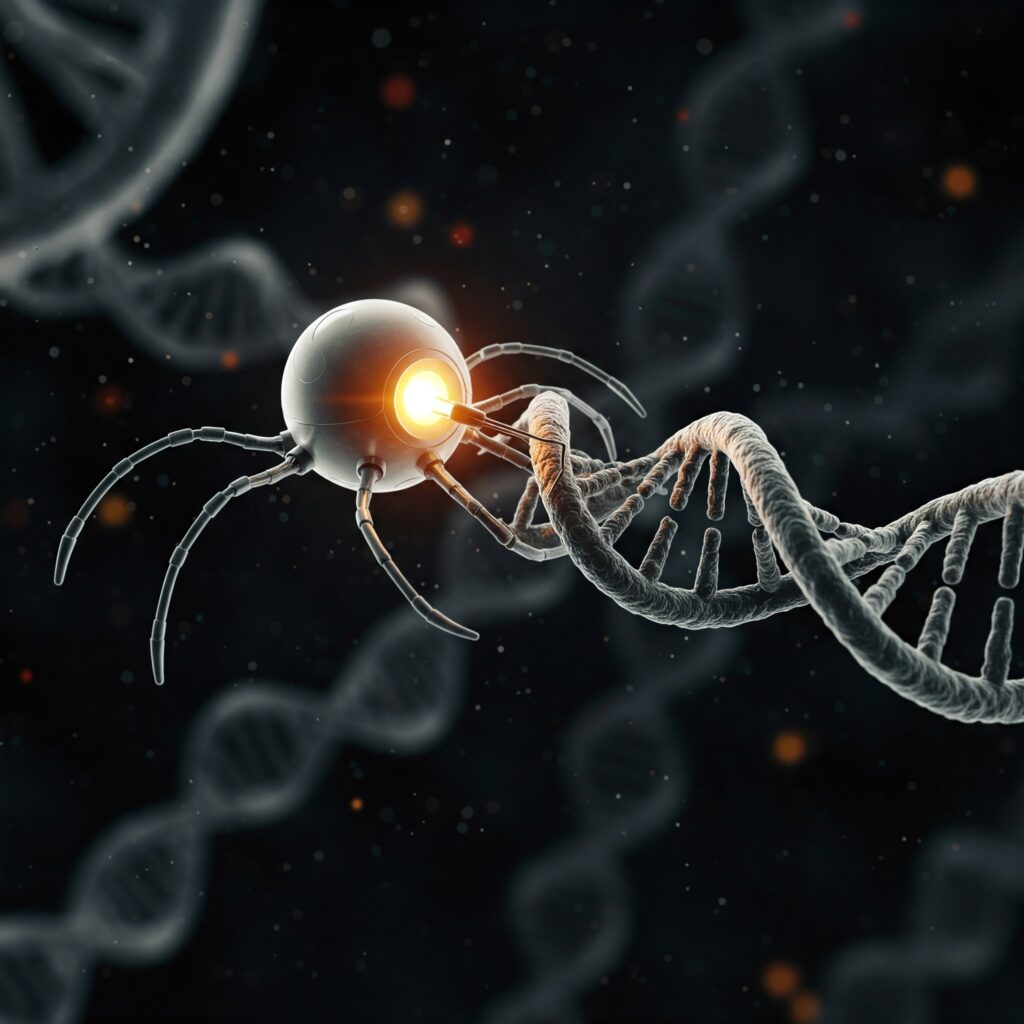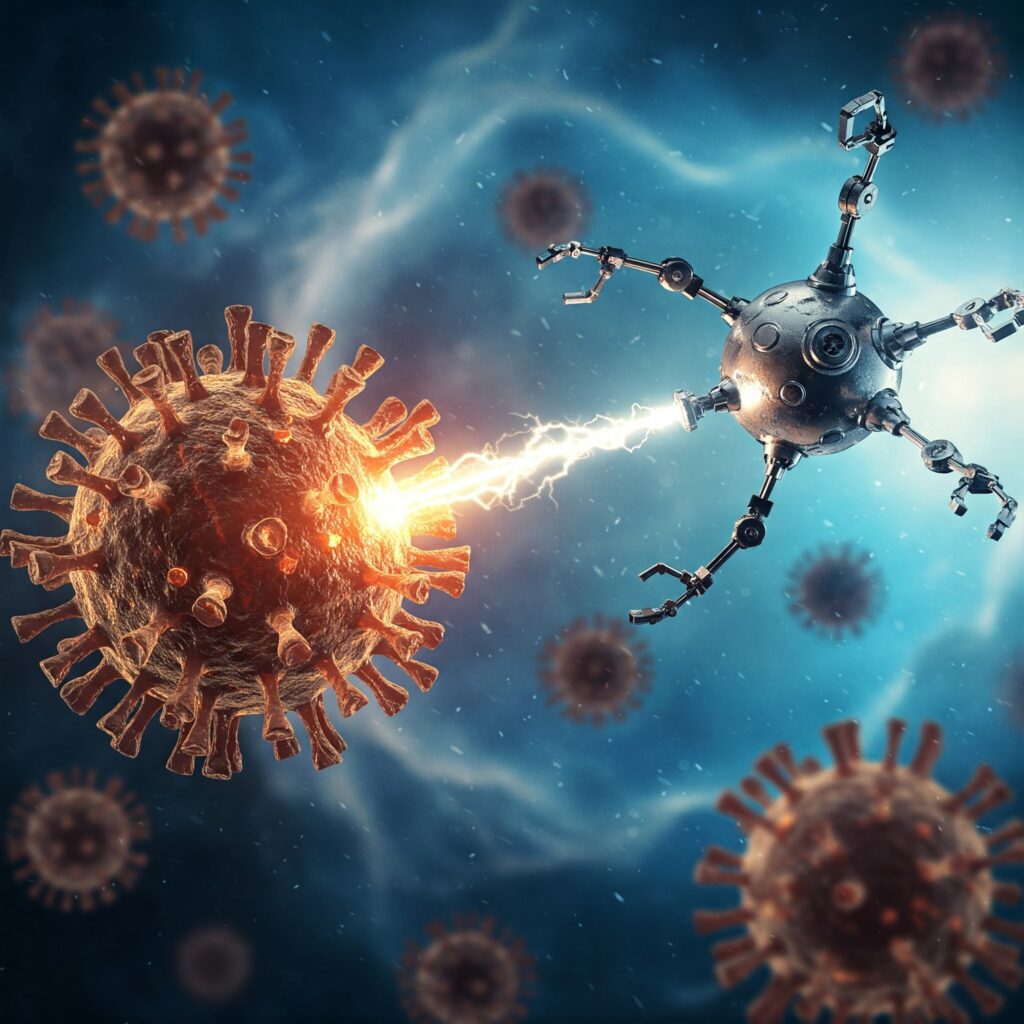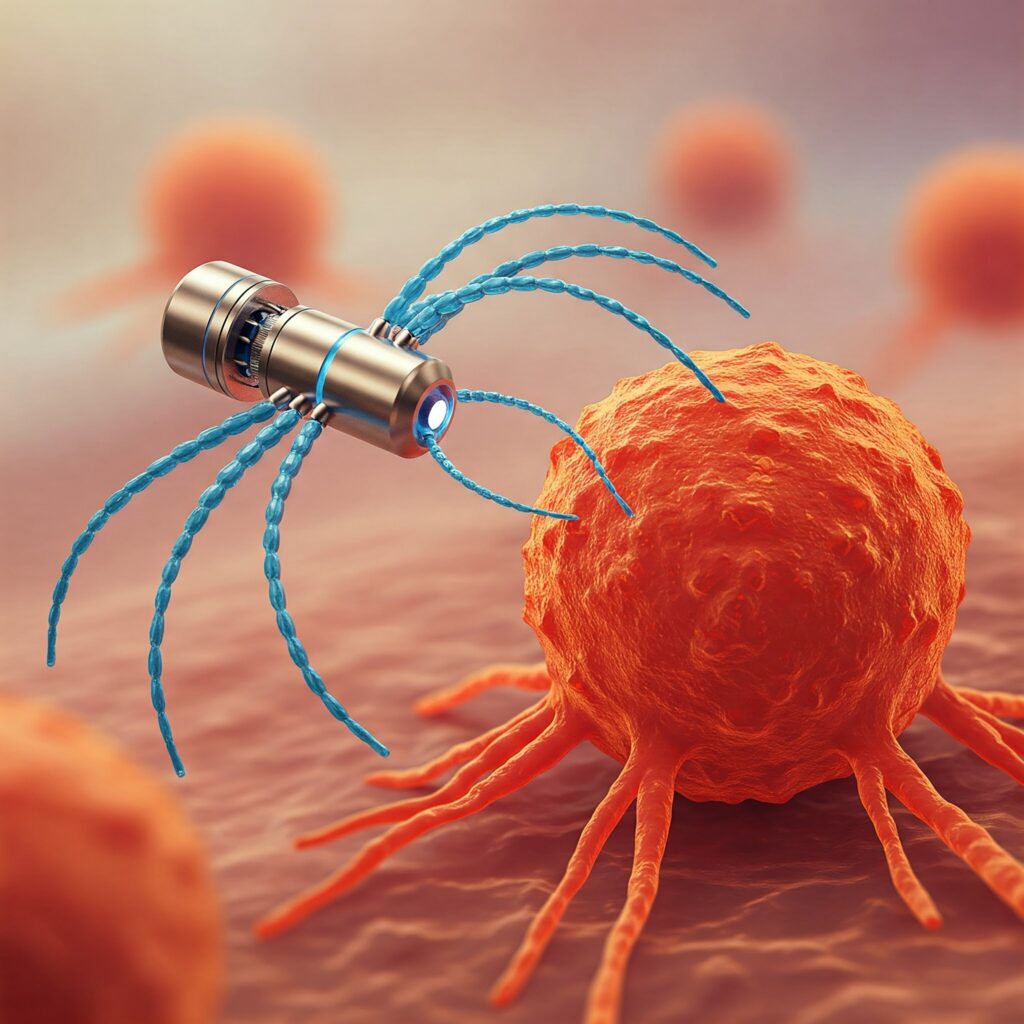Let’s consider the human body as a huge city. Imagine that there is a constant flow and traffic in this city, where millions of people live. A metropolis where everything flows in order and harmony. But sometimes dead-end streets, collapsed structures, and damaged roads can also appear in that orderly chaos. Imagine that this is where the hidden heroes of the metropolis come into play; nanorobots. These hidden microscopic engineers are tasked with instantly figuring out where the problem is and what it is caused by and eliminating it. Scientists are preparing to treat diseases more sensitively than ever before by using and developing these micro engineers. What do you think, maybe these intelligent engineers, who seem like a dream, can be a savior in the future and eliminate our health problems?

What Are Nanorobots and How Do They Work?
Nanorobots are robotic systems that work at the nanometer (10⁻⁹ meter) scale. Nanorobots, which are generally used for medical and biological purposes, have a size smaller than a human cell, about 1/1000 of the thickness of a human hair. These smart engineers are made of advanced materials such as biocompatible polymers, and their structures include advanced components such as carbon nanotubes, DNA origami, and magnetic nanoparticles.
Nanorobots are basically programmed to perform certain tasks. These working principles vary according to their structural features and functions. In general, the variable features of nanorobots are as follows;

- Movement and Direction: Nanorobots use different methods to move. One of these is to move using magnetic fields. This method is used to direct to the targeted area in tissues or blood vessels. Another method is biological motors. Thanks to this system, some nanorobots have the ability to move on their own. This feature is a system designed by taking examples from some bacteria or biological systems. The last method is to move according to chemical reactions. Nanorobots gain the ability to move by reacting to chemical reactions in the environment. For example, nanorobots are directed towards that area using chemical signals for an infection in any part of the body.
- Mission Control Panel: The movements of nanorobots can be controlled by an external system through artificial intelligence and biological systems. This control provides direction and movement ability. For example, when any cancer cell is detected, the nanorobots can be connected and therapeutic agents can be released through the external control system.
- Structural Properties and Materials: Nanorobots are produced from durable, advanced materials. These materials are usually made of polymers, metals, and organic materials. These materials are produced from biocompatible materials so that they can stay in the body for a long time. In this way, they can work for long periods without harming the body.
- Data Collection and Feedback: Nanorobots can make their tasks more effective by collecting data from their surroundings. For example, cancer cells can be detected and the detected data can be transferred to an external device without wasting time before applying treatment. Thanks to this data transfer, treatment can be done more meticulously.
Nanorobots that work with different energy sources allow them to work with special care for every fine detail. So how does this fine workmanship allow micro engineers to create a revolution in the field of health?

The Role Of Nanorobots In Medicine
Nanorobots have the potential to create a great revolution in fields such as medicine, biotechnology, environment, industry. Today, they are used in many areas such as targeted drug delivery, combating infection, treating neurological diseases, tissue repair and biosensors. The use of nanorobots in cancer treatments is particularly striking. Nanorobots have the ability to directly target the target tissue, namely tumors, and minimize the side effects of chemotherapy without damaging healthy tissues. This is seen as a technology that can create a great revolution in the fight against cancer. In addition, antibiotic-resistant bacteria have become one of the global health problems today. Thanks to nanorobot technology, infected areas can be diagnosed early or pathogens can be neutralized by being directed directly to those areas.
In addition to their most well-known areas of use, nanorobots are also used in environmental engineering. Nanorobots that clean heavy metal pollution, that is, can detect and neutralize toxic substances in water resources, have begun to be developed.

The Future Of Nanorobots: Science Fiction Or Reality?
When we look at the current situation, the areas of use and effects of nanorobots are quite intriguing and exciting. Who knows, maybe in the future, with the development of technology, early diagnosis and treatment processes can be initiated thanks to nanorobots without the need for doctors to diagnose the disease? Yes, I am aware that these innovations are both exciting and scary. For example, who will control these nanorobots or can these microengineers be used for bad purposes? In addition to all these current uses, security and ethical issues have divided scientists in two. So is there a solution to this? While scientists continue their research on these nanorobots, which are still maturing, perhaps we should ask ourselves the real question. Do we want these revolutionary micromachines in our lives? Are we really ready for this invisible revolution that awaits us?
We got inspired by those articles to create this content


I am Damla Aras. I am a third year student at Marmara University Bioengineering. I aim to find answers to questions that arouse scientific curiosity and raise awareness in these areas by writing articles on biotechnology, genetics and biology on the Biyologyto platform. I present complex scientific topics in a simple and engaging way by blending knowledge with daily life, and I aim to be a source of both information and inspiration for readers.





